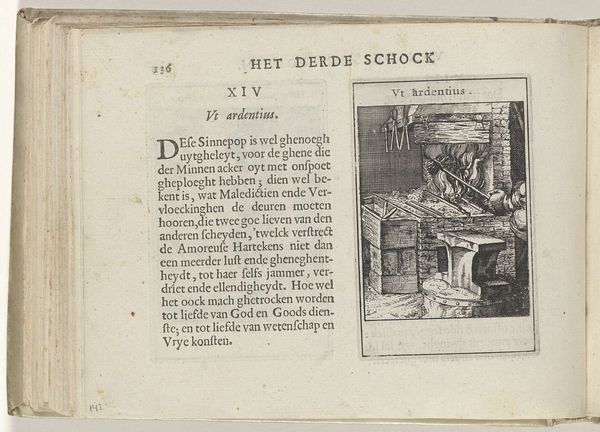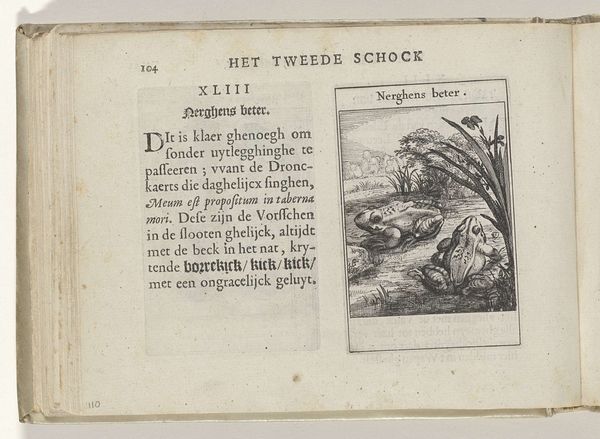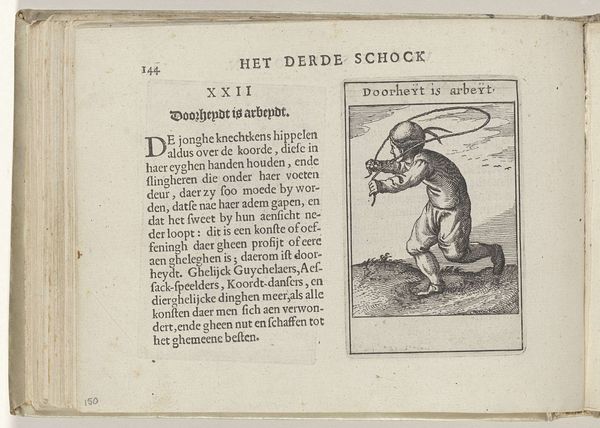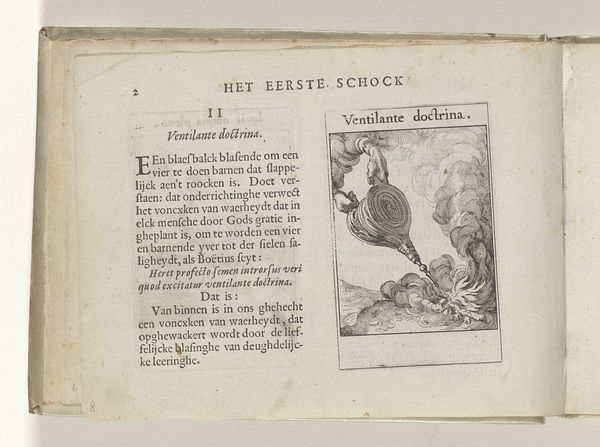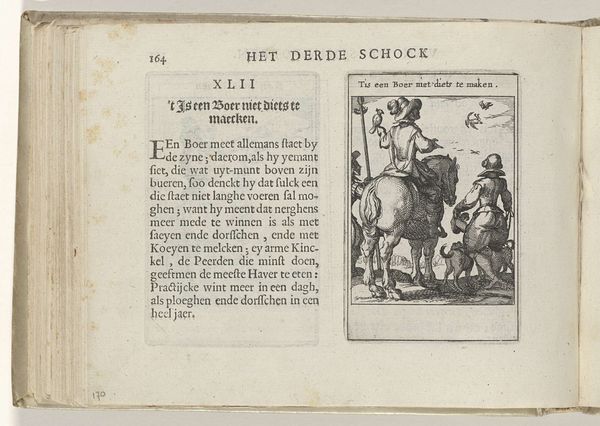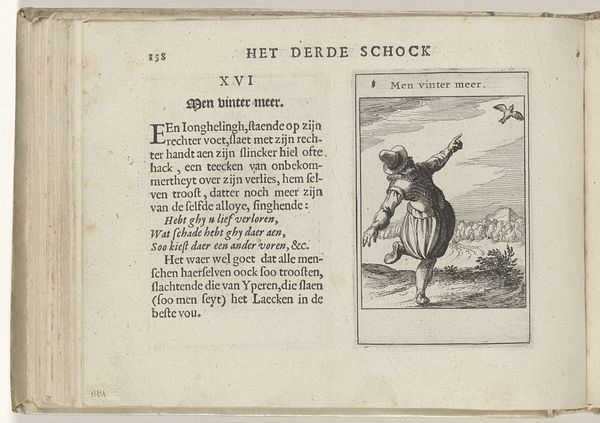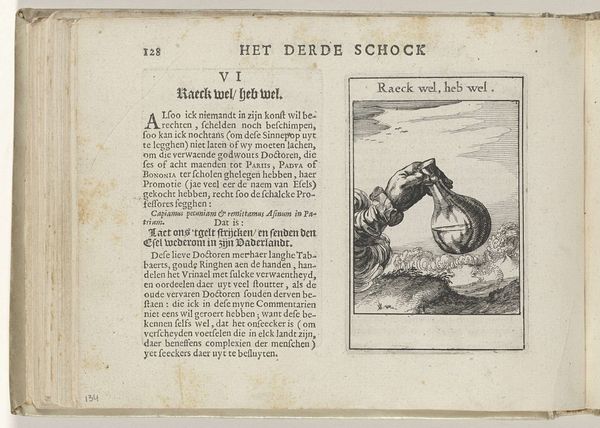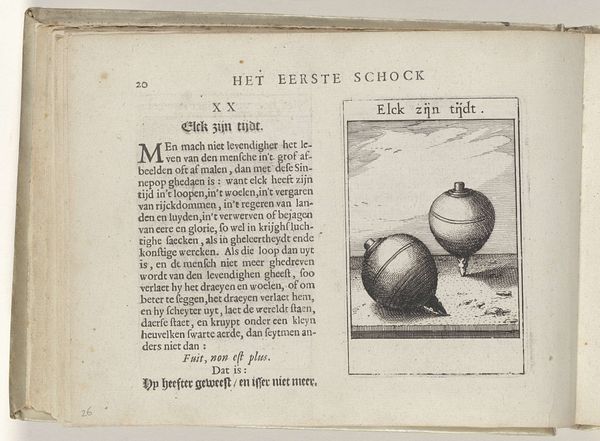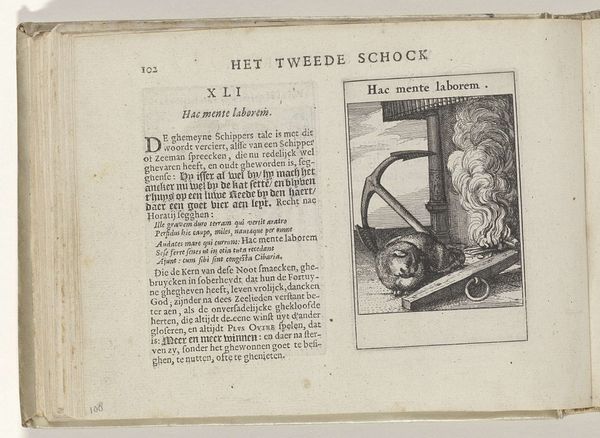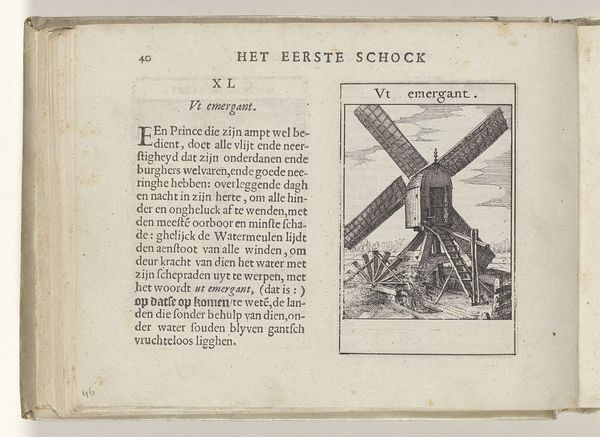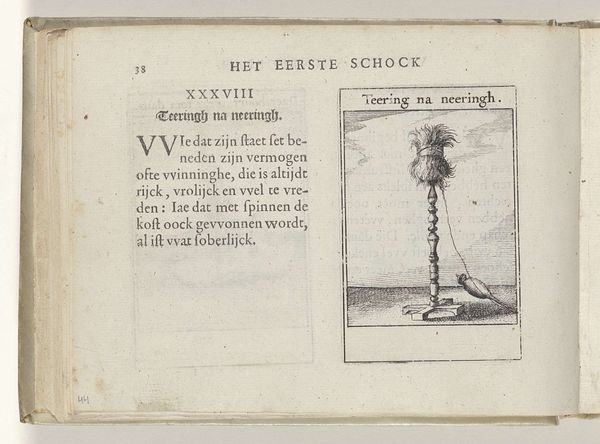
print, paper, ink, engraving
#
dutch-golden-age
# print
#
paper
#
ink
#
genre-painting
#
engraving
Dimensions: height 137 mm, width 188 mm, height 95 mm, width 60 mm
Copyright: Rijks Museum: Open Domain
Curator: We’re looking at a 1614 engraving by Roemer Visscher entitled "XXXII Sorght voor de koele wijn niet," part of a larger series and currently held in the Rijksmuseum collection. Editor: My initial impression is one of stark practicality. It’s a very direct image of domestic implements. Nothing superfluous, just tools and objects relating to household management. Curator: Absolutely. Visscher was a merchant as well as a writer and artist, deeply involved in the economic life of the Dutch Golden Age. The engraving itself is quite detailed; you can see the texture of the wood in the chair, the hammered metal of the wine cooler, the utilitarian forms. What do these objects communicate? Editor: Well, within the context of early 17th century Dutch society, where burgeoning trade led to new wealth, it's easy to consider the rising emphasis on domesticity and conspicuous consumption. I am particularly drawn to the relationship between object placement and textual admonition. The accompanying text implores newly married couples to first attend to the "needful expenditures" before indulging in pleasures—such as cool wine! The visual is one that prioritizes function before aesthetic expression; moreover, it may stand as a social commentary around gender and status too. Curator: Precisely, the image's seeming simplicity belies complex social messaging. Note how printmaking itself served the purposes of broader societal directives during this period: mass-produced art at modest pricing; disseminated quickly with an urgent message. Considering who may have seen or purchased pieces just like this—did the accessibility enable class mobility or instill further pressures about societal expectations? Editor: Yes, it functioned as a visual guide on how to be good, productive, and above all, respectable in a time of fast-paced capitalist expansion. I wonder who Visscher had in mind while producing this—and if those from all economic statuses benefited equally from it. Curator: A crucial point. Its social context reveals far more than initially meets the eye, I believe! Thinking of labor in domestic environments feels imperative too when examining the assembly and access to objects from differing standpoints, across class. Editor: It underscores how something as seemingly benign as an engraving about household items is intricately woven into broader dialogues surrounding ethics, economics, identity, and morality during this specific cultural era! These seemingly disparate facets cohere in ways that impact societal value judgments; that in itself merits further discourse!
Comments
No comments
Be the first to comment and join the conversation on the ultimate creative platform.
